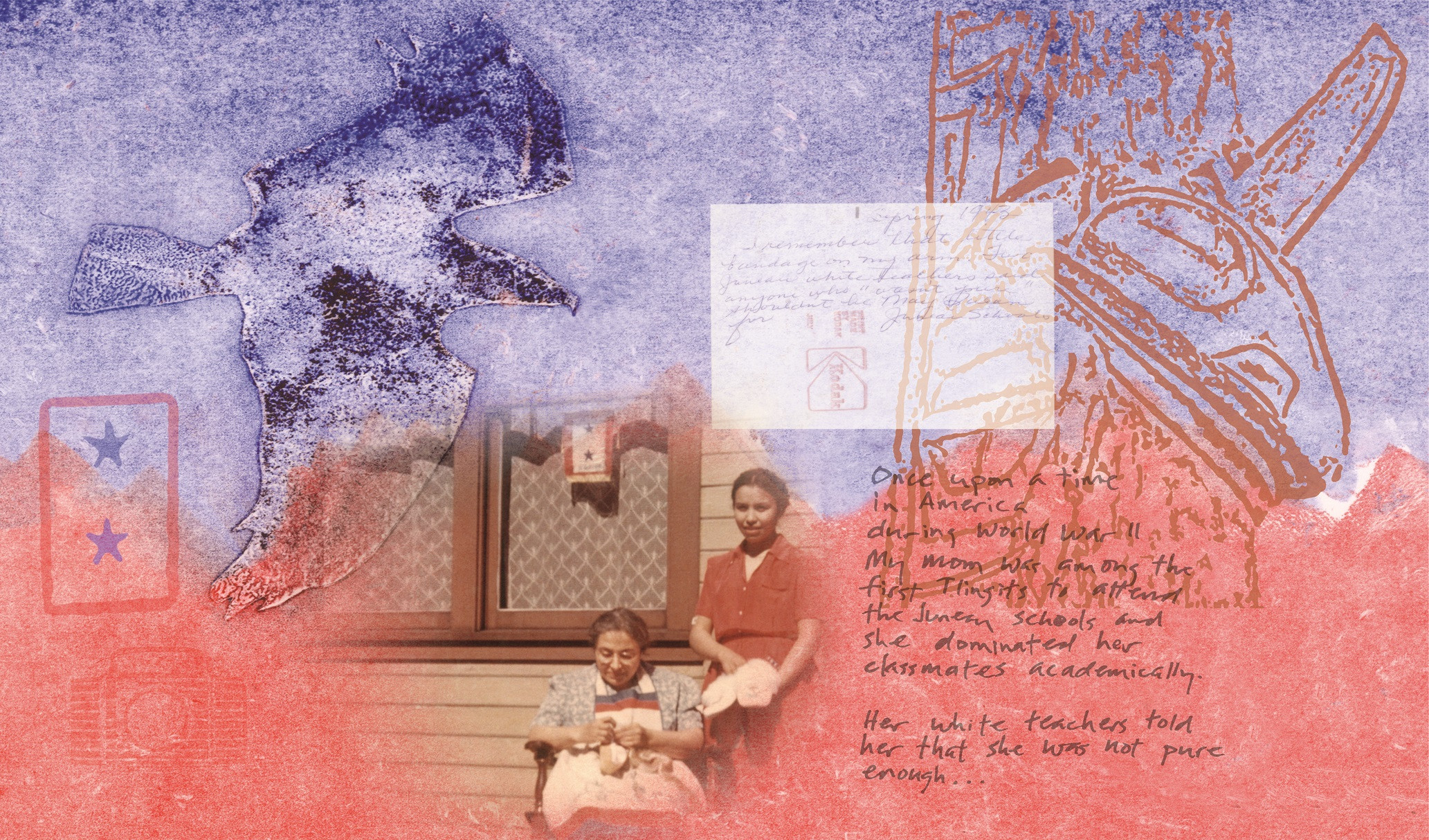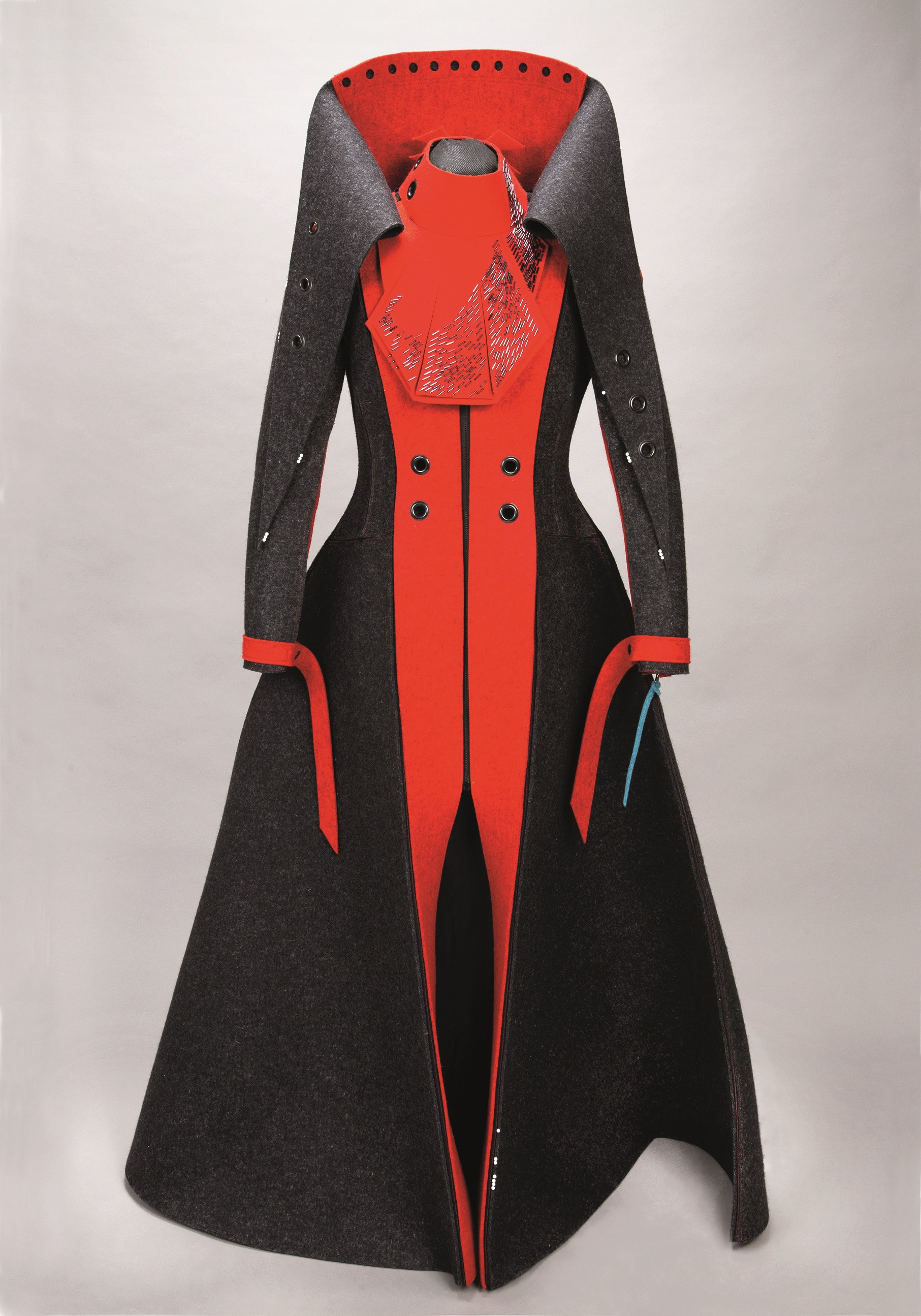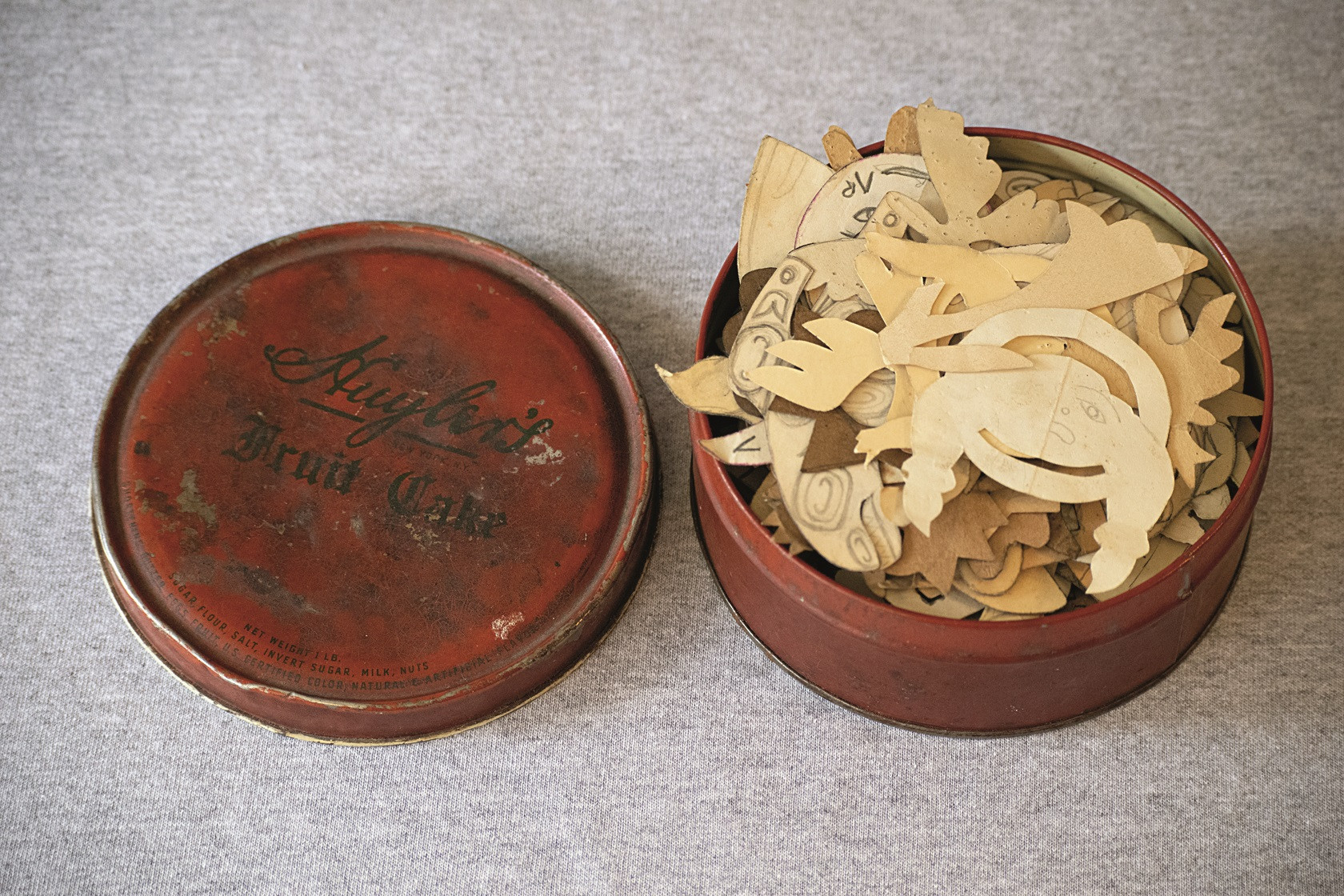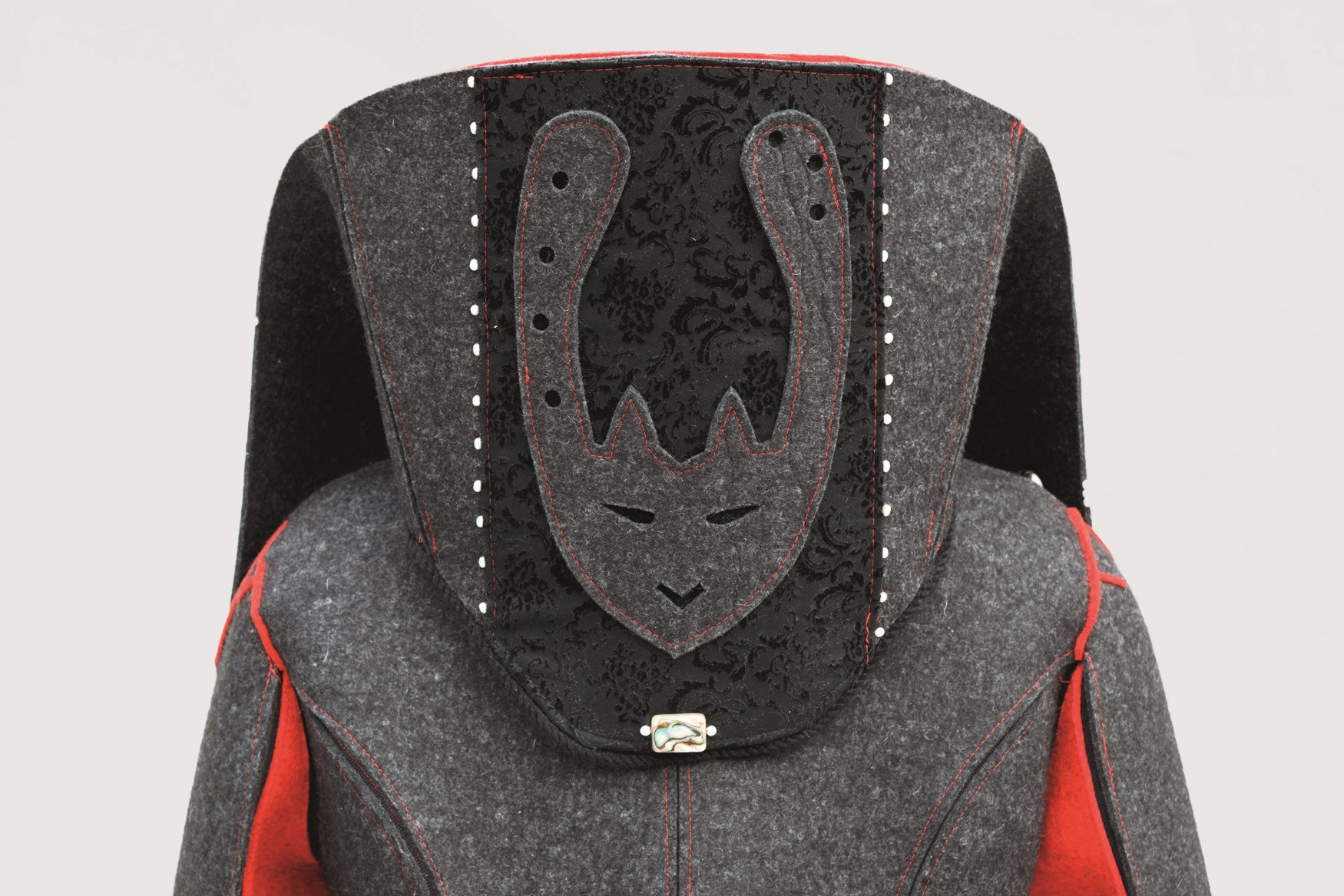Contemporary artworks often reveal profound connections to the gifts, both tangible and intangible, passed down from mothers and grandmothers. In the realm of Tlingit beadwork, this intergenerational exchange is particularly poignant. Inspired by ephemeral fragments like a family snapshot of beading women and a tin of paper beadwork patterns, artists like Larry McNeil and Tanis S’eiltin create powerful pieces that underscore the historical significance of this art form. These artworks, central to understanding Tlingit beadwork history, highlight the enduring legacy of Grandmother Gifts within the culture.
For generations in Southeast Alaska and beyond, Tlingit mothers and grandmothers have understood the potent nature of beadwork. It served not only as a means to sustain their families financially but also as a powerful affirmation of their millennia-old bond with the land and its abundant resources. Despite this rich heritage, the 20th century saw many scholars and collectors dismiss their beadwork as unoriginal and lacking authenticity. However, Tlingit communities have always recognized the strength and resilience of these women, who faced overt racism and discrimination from colonial institutions. Now, through the generosity of the beaders’ descendants, who share their ancestors’ stories through contemporary art, the historical importance and profound impact of these influential Indigenous women are gaining wider public recognition. Their beadwork stands as testament to the enduring power of grandmother gifts, both in a material and spiritual sense.
My initial encounter with Larry McNeil’s photographic collage, Once Upon a Time in America, was captivating, largely due to the 1943 snapshot at its heart. This image depicts his mother, Anita McNeil (kaajee seidee), and grandmother, Mary Brown Betts (kah saa nák), engrossed in sewing beaded moccasins. It beautifully encapsulates the intangible intergenerational knowledge – a true grandmother gift – that fueled so much beadwork during the mid-20th century. Archival research reveals that approximately five hundred women crafted beaded moccasins and other items for sale through the Alaska Native Arts and Crafts Cooperative from the 1930s to the 1970s. Many contemporary artists recall childhood memories of observing or assisting their grandmothers with beadwork, a quiet yet powerful form of learning and connection. In his print and writings, McNeil emphasizes the strength of these women through this seemingly ordinary activity. In reality, beadwork was central to their fight for equal education and the preservation of intangible Tlingit knowledge in a discriminatory era. The stories shared by Larry McNeil and his sisters, Helen and Patty, about their mother and grandmother are invaluable in understanding these grandmother gifts of skill and resilience.

A captivating artwork titled “Once Upon a Time in America” by Larry McNeil from his “Fly by Night Mythology” series, created in 2002. This piece is a thoughtful exploration of grandmother gifts and Tlingit heritage, showcasing a photo courtesy of the artist.
My conversations with Tanis S’eiltin over the years have often revolved around octopus bags. These distinctive pouches, adorned with beaded seaweed and floral designs and featuring four pairs of “tentacles,” reflect historical trade relationships with inland communities. They also demonstrate how Tlingit women aesthetically transformed these items to better represent their local knowledge and artistic sensibilities. Witnessing photographs of S’eiltin’s untitled, armor-like, floor-length coat, which features an oversized beadwork pattern of an octopus, was truly inspiring. It was a powerful transformation of the octopus bag concept into a life-size artwork, a vibrant celebration of Tlingit women and their artistic legacy – another form of grandmother gifts expressed through art.
During a visit to view her coat, Tanis shared the existence of a fruitcake tin filled with beadwork patterns dating back to her great-grandmother’s time. The revelation was profoundly moving. While I had heard of these tins holding patterns, this was the first time I had the privilege of seeing one. As we carefully unfolded hundreds of delicate paper pieces, cut from old envelopes and cookbooks, Tanis recounted stories of the women who had contributed to this collection over the years, including her great-grandmother, Mary Barries, and her mother, Maria Ackerman Miller (Ldaneit). These patterns, and others like them, served as templates for countless pairs of moccasins sold throughout the 20th century. The oversized octopus pattern on the coat boldly foregrounds these influential Tlingit women and their central role in trade, encompassing both economic exchange and the relationships that brought octopus bags and other treasures to Southeast Alaska. S’eiltin draws inspiration from this cherished “box of treasures” – a tangible representation of grandmother gifts – to create works for her own children and grandchildren, ensuring the continuation of their matrilineal heritage. The opportunity to write about Tanis’s work and the legacy of these grandmother gifts is deeply appreciated.

A striking photograph showcasing Tanis S’eiltin’s “Untitled” artwork from 2017. This piece beautifully illustrates the concept of grandmother gifts through contemporary Tlingit art. Photo courtesy of the author.

An intimate glimpse into Tanis S’eiltin’s fruitcake tin, holding three generations of invaluable beading patterns. This tin represents tangible grandmother gifts and the preservation of Tlingit artistic heritage. Photo courtesy of the author.

A detailed close-up of the nape of Tanis S’eiltin’s “Untitled” coat from 2017, highlighting the intricate beadwork. This detail emphasizes the artistry and skill inherent in these grandmother gifts. Photo courtesy of the artist.
My sincere gratitude extends to all Tlingit people, both past and present. Their enduring cultural practices, marked by the innovative and creative incorporation of new ideas and materials, are a source of constant inspiration. The histories and stories shared in Painful Beauty serve as a powerful testament to the enduring strength of their art and the resilience of their spirit. The tradition of grandmother gifts, exemplified through beadwork, is a vital thread in this narrative.
Megan A. Smetzer is a lecturer of art history at Capilano University and author of Painful Beauty.
Share this:
Like Loading…

